For all that the (hi)story of architecture and design is one staged against a background of economic, social, environmental, cultural, et al evolutions and developments, it is also a (hi)story fundamentally dependent upon developments and evolutions in materials, and also in the development and subsequent evolution of novel technologies. Novel technologies and materials which not only enable new approaches to the construction of our buildings and the manufacturing of our objects of daily use, but also enable new forms which offer the possibility of new functionalities and new relationships; new functionalities and new relationships appropriate for and demanded by the age, appropriate for and demanded by the contemporary economic, social, environmental, cultural, et al realities. And which ultimately allow that age to develop into, segue into, the next.
With PRINT3D. Reprint Reality the CaixaForum, Sevilla, allow space for reflections on the actuality, and future possibilities, of 3D printing, a technology that although it has been around for a few decades is, arguably, only now starting to fully reveal its potential and indicate where and how it could contribute to the future of architecture and design. And thereby contribute to future society.......
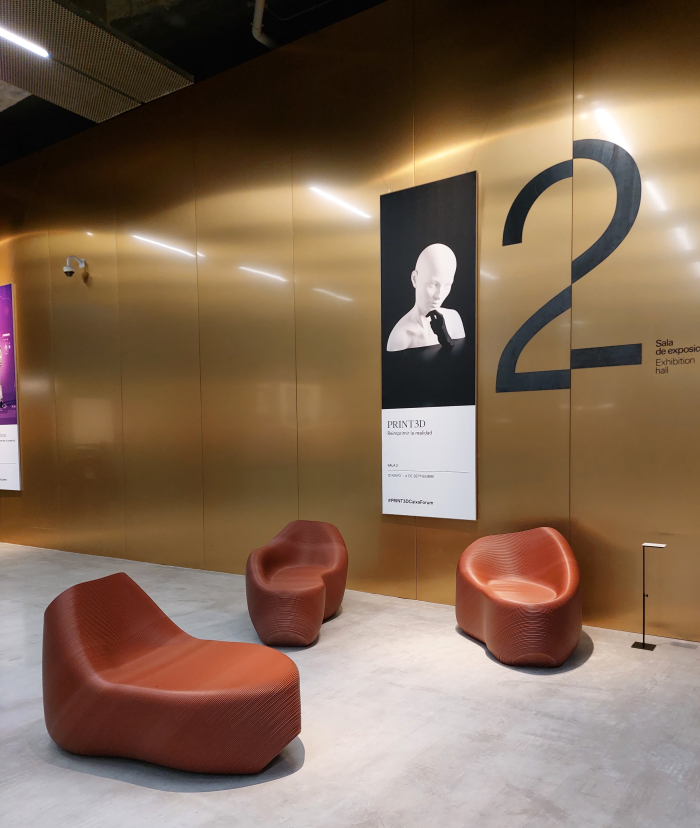
As with so many technical innovations, and as discussed, for example, from Back to Future. Technology visions between fiction and reality at the Museum für Kommunikation, Frankfurt, or Konstantin Grcic. New Normals at Haus am Waldsee, Berlin, the (hi)story of 3D printing begins with visions in an age long before the technology existed, visions of a future in which one could make "drawings in the air" via machines from which "plastic comes out of the end of the drawing arm and hardens as it comes"1, thereby enabling one to quickly and efficiently produce not only the houses, ships and spaceships a Dirk Braddick imagined in Murray Leinster's 1945 novelette Things Pass By, but all manner of objects. Visions which in the 1980s became reality with the development of the first 3D printers; at first rudimentary and limited and ungainly devices and technology, but which developed, relatively, rapidly throughout the subsequent decades and saw 3D printing move into ever more branches of industry and academia as ever more early adopter researchers began exploring specific applications of the technology, and imagining new futures for their respective disciplines.
And which in the first decades of the 21st century moved from the research lab to the home with the release of the first commercial table top 3D printers, thereby enabling us all to make "drawings in the air" in the comfort of our own kitchen. Or garage. Or cellar.
But which only relatively few of us do; much more the contemporary popular understanding of home 3D printing is something for geeks of all hues. An understanding tending to be reinforced by a quick tour through any online 3D print library, those invaluable repositories for all not proficient in the computer-aided design necessary to create your own objects for printing, and which present themselves as voids of Star Trek, Star Wars, Pokémon, Mario, Pac-man, Westeros, Essos, Middle Earth, Minecraft et al, paraphernalia and devotionals, and of innumerable hooks for hanging headphones on, of multifarious cable clips, of AAA battery holders, socket set holders, marker pen holders, and untold other holders and objects and playthings the greater majority of us not only have no conceivable need for, but can't imagine that anyone could, would, have an actual need for.
Thus 3D printing remains in popular understandings something for geeks, both professional and amateur. Something far removed from the reality which the greater majority of us inhabit. Something we needn't concern ourselves with.
Yet as PRINT3D. Reprint Reality elegantly elucidates, not only is 3D printing very much here, very much a thing, but much like smartphones have already done, 3D printing could, in all probability will, increasingly pervade into ever more aspects of daily life and in doing so could, will, become something we all know didn't use to be a thing, yet can't remember how society functioned, could possibly have functioned, without it. Will become, if one so will, a Grcician New Normal. And in doing so PRINT3D admonishes that 3D printing is very much something we should, must, all concern ourselves with.
Whereby the first question many will pose is, ¿Cómo Funciona?, ¿How does it work?, this futuristic drawing in air.
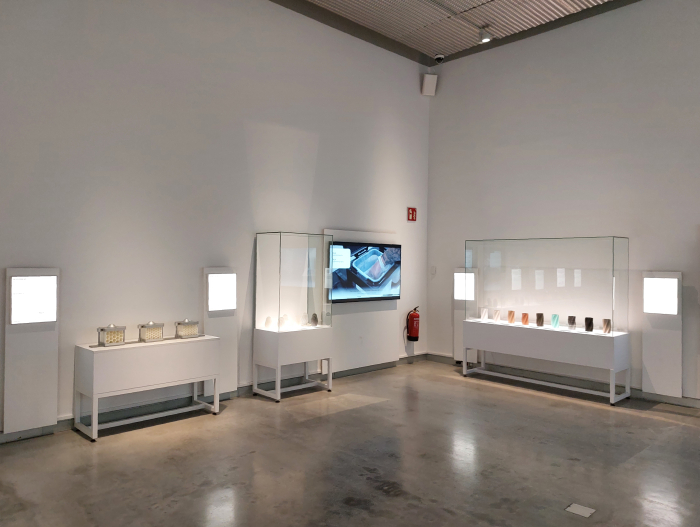
PRINT3D opens with that very question, an introductory chapter which explains what 3D printing is, explains how one 3D prints, both the theory and the various methods by which one can 3D print, for 3D printing is but an umbrella term for a concept, not a process in itself.
An introduction which introduces the myriad materials with which one can 3D print today, including, and amongst many others, synthetic plastics, ceramic, wood or steel. If still not Dirk Braddick's "magnetronic plastics".2
An introduction from first principles, supported by an array on interactive, hands-on, exhibits, and devoid of any impenetrable technical academese, which underscores right at the beginning that PRINT3D isn't an exhibition for experts, or one just for adults, rather one for all of all ages who are keen to know more and better understand, better appreciate, 3D printing. And in doing so is an introduction that allows you to relax, takes away any fear you may have had of a presentation full of technology, a showcase aimed at geeks, professional or amateur.
And an introduction which in allowing you to relax and enabling you to grasp how essentially simple 3D printing is, certainly in terms of how the technology prints, if not in the way more complicated development of hardware and software or the actual process of designing models for printing, allows you to concentrate in the main body of the exhibition less on the how the objects were realised, you've grasped that, but primarily to concentrate and focus on the what the objects represent and also on the future of 3D printing and the place of 3D printing in future society.
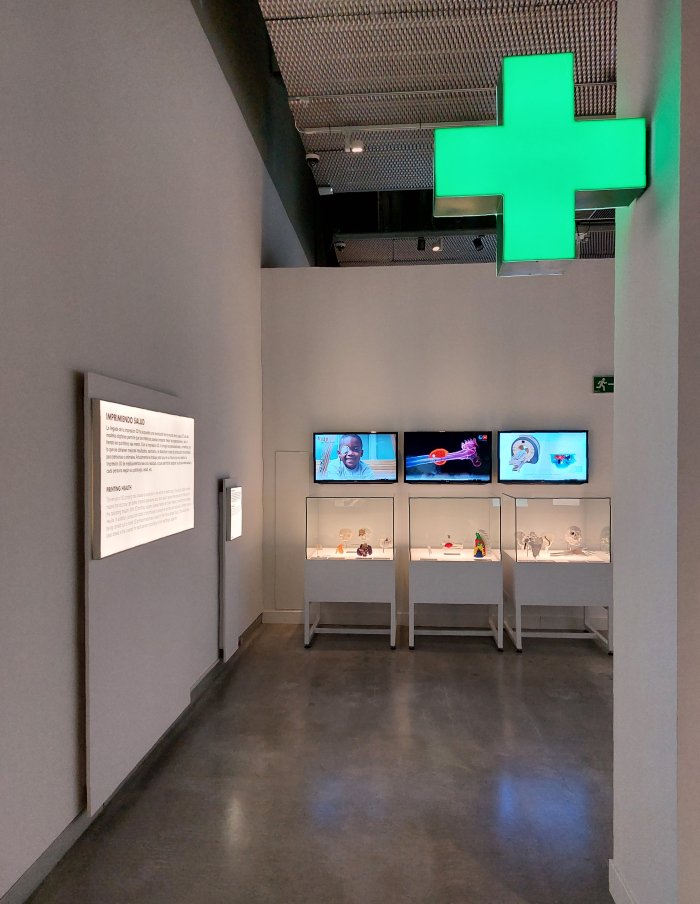
A discussion advanced and promoted in PRINT3D via chapters exploring applications of 3D printing in differing theatres: Healthcare, including brief discussions on, for example, some of the various and varied ways 3D printing helped support our initial response to the Covid pandemic, the 3D printing of pharmaceuticals as a future of apothecary, or animal healthcare, a subject very neatly illustrated by a gallery of non-human creatures of all genres with 3D printed prosthetics; the Clothing Industry, a presentation which has at its core a discussion on, and invitations to virtually create, when not actually print, a 3D printable dress and 3D printable shoes; Household Goods of all genres and which alongside furniture, lighting and crockery also presents Grohe's Atrico Icon 3D bathroom tap, an object 3D printed in steel; Art, not just in context of actual works but also in terms of 3D printing musical instruments; and, and for us one of the more interesting chapters, that which the curators title Imprimiendo Territorio, Printing Territory, which concerns itself with works and projects at larger scales, the houses, ships and spaceships of a Dirk Braddick, and which, amongst other works, introduces a 3D printed motorbike. Or at least a partially 3D printed motorbike, a motorbike featuring 3D printed components. An exhibit, a demonstration of contemporary 3D printing, which, certainly for us, tends to reinforce, support, our position that one of the most natural and meaningful manners in which to further develop Karl Clauss Dietel and Lutz Rudolph's Simson Mokick motorbike is via 3D printed components. Ideally, most poetically, via open source components as an extension of the offene Prinzip.
And 3D printed fuel tanks, exhausts, mud guards etc which help underscore and elucidate one the promised advantages of 3D printing: the ability to produce on demand, locally and with options for customising, and thereby allowing for more economic and responsible and responsive manufacturing and construction, or as a Dirk Braddick would phrase it, "this constructor is both efficient and flexible".3 Or put another way, why shouldn't the auto parts shop of the (near) future not be a 3D print studio, where you order the parts you need in the morning and pick them up in the evening? Or the next day, if they're somewhat larger.
Similarly the furniture shop of the future. PRINT3D presents numerous products from Ávila based manufacturer Nagami and Rotterdam based The New Raw who both, and as with, for example, the ever joyous Amsterdam based Dirk Vander Kooij, very much harness 3D printing for factory production; but who also, and as with, for example, and perhaps most elegantly, Thorsten Franck's PrintStool project, allow the possibility of a future in which furniture is 3D printed locally, on demand, by a retailer. Thus negating the transport, packaging and storage problems of the contemporary centralised furniture industry. And that not just in context of the relatively simple genres on show in PRINT3D but also complex office chairs. Just a few short years ago the proposition that one could 3D print a complex office chair would have been denounced as absurd, you'd have been laughed out of Orgatec and Neocon; however, given that most office chairs are constructed from individual components, all of which can be, or at least very soon (probably) will be, 3D printable, and that most office chair manufacturer's principle product line is available in a near endless number of variations which must be individually assembled to order, there is a very clearly argument to 3D printing on demand at point of supply, rather than a globalised mass production, shipping and storing of components that may potentially be needed at some undefined point in the future.
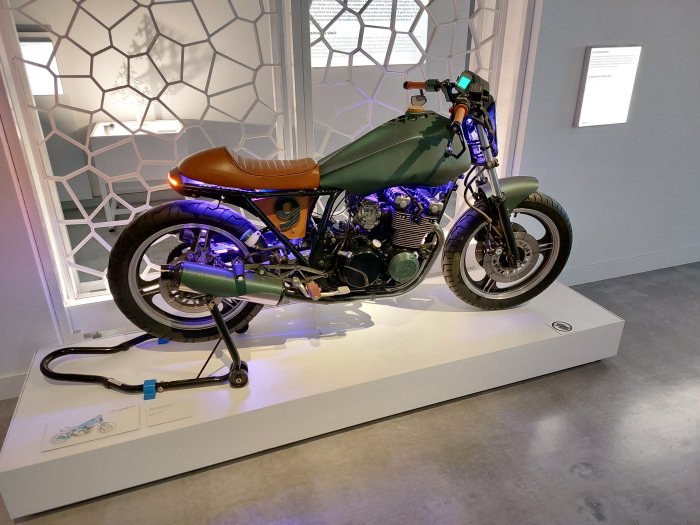
Imprimiendo Territorio also introduces the subject of 3D printing in construction, for us one of the more interesting and important applications, an application which, as we opined, for example, in context of the Italian civil engineer Pier Luigi Nervi, is currently one of the more promising vehicles via which to carry the development of construction, construction not architecture, forward into a brave new future, to move construction away not only from the brick on brick, but from a Nervi's pre-cast reinforced concrete. And an application discussed in PRINT3D via, and amongst other exhibits, models of 3D printed houses whose round forms not only remind of a myriad global, vernacular, architect free, housing solutions, but also allow one to understand that Arne Jacobsen and Flemming Lassens 1929 House of the Future wasn't of the future because you could land a helicopter on the roof and arrive in the cellar by boat, but because it could be 3D printed; a model of the Institute for Advanced Architecture of Catalonia's Advanced Architecture Group's 3D printed footbridge for the Castilla-La Mancha park in Alcobendas on the northern edge of Madrid, a work which reminds that bridges were one of the first domains in which cast iron and reinforced concrete demonstrated their viability and reliability to previous generations. And also via the same Institute's so-called Minibuilders, crawling robots that enable, or perhaps more accurately promise to enable, not only a relatively more straightforward, and more rapid, 3D printing construction process, but also allow for the printing of much freer and readily variable forms, and that much more efficiently, not least economically efficiently, being as they are not restricted by the need to build an external structure to support the "drawing arm" out of which concrete comes.
Or out of which clay comes.
Or out of which metal comes.
Or out of which recycled plant fibre comes: Imprimiendo Territorio presenting a section of the so-called Gaia house by Massa Lombarda based 3D printers Wasp in conjunction with Andorno Micca based RiceHouse, and which employs local soil mixed with waste husks and straw from commercial rice production as its construction material.
Thus considerations on 3D printing in construction which also allow ready access to one of the other promised advantages of 3D printing: the possibility of both new methods for handling and employing existing materials and thus new applications of existing materials, but also, and arguably more interesting, the more ready use of local and local recycled materials. With 3D printing, while the materials must obviously be fit for purpose, there is a lot less necessity for material purity than in conventional construction and manufacturing processes, you don't need virgin materials, you're not using material in a traditional sense and traditional way, but working with it in a new format, using a technology which adapts the material. With all the possibilities that inherently contains.
And all the dangers.
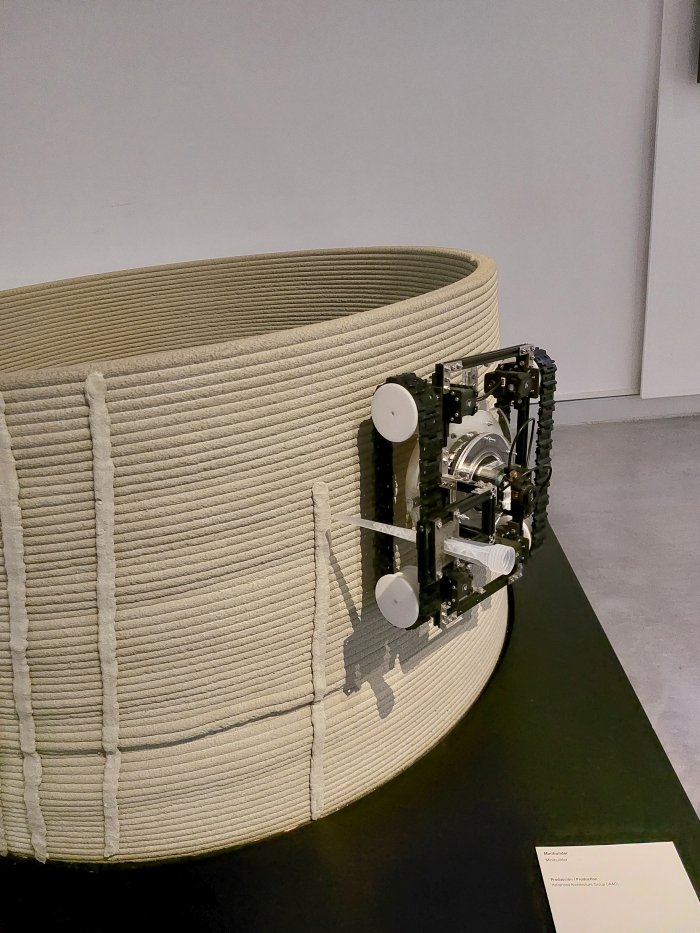
Despite what we all convince ourselves, and no matter how conscientiously and diligently we ignore the lessons of (hi)story, novel technology always comes with dangers, not least because the fact it's novel means we have but little experience with its reality. The internet being unquestionably the best contemporary example of a novel technology gone rogue. Thus for all that 3D printing promises a bright new future of more sustainable and responsible manufacturing and construction, a bright new future of, in effect, lo-cost, lo-tech, local production, a future of construction and manufacturing which is "both efficient and flexible", we shouldn't lose sight of the darkside. As a 3D printed Yoda phrase it he would
PRINT3D highlights the potential problems around the issue of 3D facial recognition tools and the possibilities such open, for example, for potential identity theft through prosthetics, and to which we'd add, for example, and amongst other possible dangers, questions of potential new forms of inequality through unequal access to 3D printing technology, and of the thereby arising new dependencies, or questions of 3D printed weapons of all kinds, not just the guns that caused a furore a few years ago, but steel knives and blades of all descriptions; although, that said, ⚠️ 🚨 ⚠️ 🚨 ¡¡¡ SARCASM ALARM !!! ⚠️ 🚨 ⚠️ 🚨 as we all know the more weapons there are in the world, the safer we all are. So perhaps us all being able to print our own arsenals is an advantage.
Then there is the danger, the very real danger given that humans are involved, that far from employing 3D printing to produce less in better ways, we'll print and print and print regardless of the need, or the sense, of the objects produced: a Victor Papanek's warning about the dangers of industrial designers seems misplaced, almost quaint, as you stumble your way through contemporary 3D print libraries, your despair growing with every click. Yes, the objects therein are virtual, don't exist until someone prints them; but the fact individuals invested the time designing them, felt there was a real need for such, is terrifying, and doesn't install any real faith in our future relationship with a potentially very beneficial tool. And don't get us started on 3D printed food, a subject whose absence in PRINT3D, whose purposeful ignoring by PRINT3D, tends for us to underscore the seriousness and validity of the exhibition. That it is an exhibition concerned with reprinting desirable realities, not dystopias. Why would you 3D print food? Is what we do to our food today, how we mistreat and abuse our food today, not bad enough without subjecting it to the ignominy of 3D printing? Why would you 3D print food? No, why? Just because it is possible to 3D print a chocolate cup or a shoe or a guitar or a vase or an automatic Pokémon M&M dispenser4 doesn't mean you have to; rather much as we all currently need to reduce our consumption, so in the future we will need to control our printing, ensure that we use the technology in responsible, sustainable, meaningful ways.
But will we? Can we? Hhhmmmm?
Ultimately, and as with so much in life, where we end up on the advantage/disadvantage see-saw will be defined by us all, collectively and individually.
Or put another way, much as 2D printing has unquestionably contributed immensely to the development of global society in the centuries since the development of the first devices and technology to allow its widespread distribution, it's also caused a lot of problems and a lot of harm, not of itself directly but through its misuse by humans. It's up to us all, collectively and individually, to ensure 3D printing doesn't suffer the same fate.
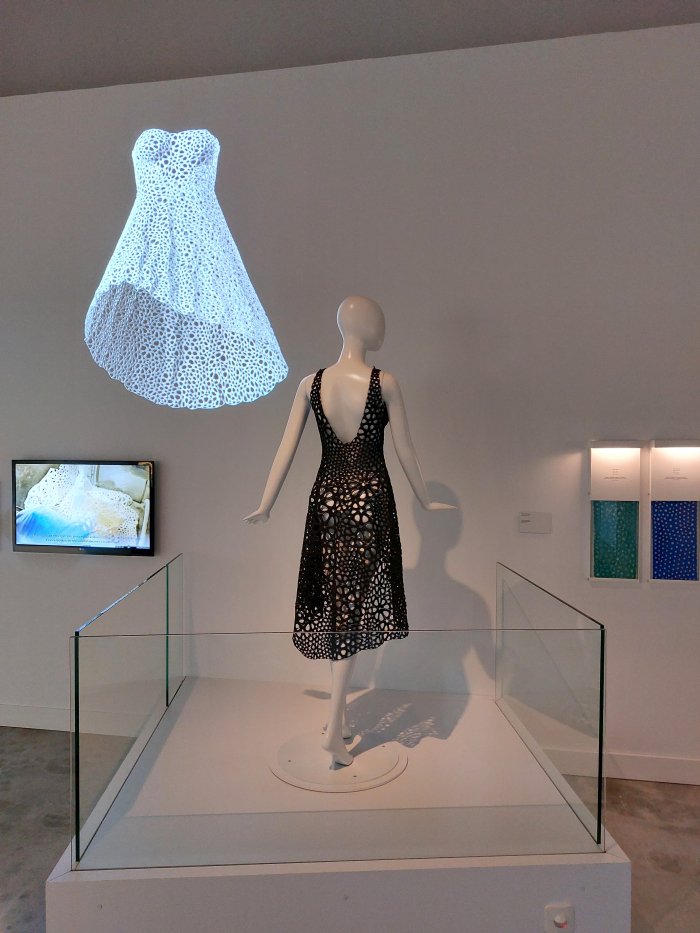
Presenting a mix of objects, models, photos and films ably supported by short bi-lingual Spanish/English texts, and innumerable interactive, hands-on, exhibits, PRINT3D covers a lot of ground in a very compact presentation, albeit with out ever feeling hurried, without ever asking you to move on before you feel ready to. It waits for you. If very much an exhibition it's well worth touring through at least twice to allow you to re-view earlier chapters in context of later chapters and thereby allow for a more rewarding experience and more lines for subsequent enquiry and consideration.
And although as an exhibition PRINT3D very much believes in 3D printing, is very much a proponent of 3D printing, it isn't so in an overly zealous, in your face, preaching type way. Rather PRINT3D enables a space in which you can firstly better appreciate where 3D printing currently is, or perhaps for a majority of visitors, a space in which you can firstly comprehend what 3D printing is and then better appreciate where 3D printing currently is, but also a space in which to reflect on our coming future of and with 3D printing. On where will we take 3D printing? Where will 3D printing take us?
In which context PRINT3D ends with considerations on 3D printing on distant planets, thus bringing us back to the future visions of a Dirk Braddick, and tending to confirm that dreaming of a brave new future is an inherent component of the human being, that, and with thoughts very much in context of Ask Me if I Believe in the Future at the Museum für Kunst und Gewerbe, Hamburg, we all want to believe in the future, which is inarguably a good place to be.
A forward looking ending that, for us, also tends to underscore the urgent necessity for the development of more accessible software for creating 3D printable objects; much, all, of the contemporary software is very much designed for experts, for the experts the majority aren't, and reminds very much of, for example, Photoshop, where if you know what you're doing everything is very simple, but as an inexperienced lay it's like reading a poem in Klingon. Which isn't conducive to encouraging wide swathes of society to practice rather than consume 3D printing, nor to enabling vast swathes to actively contribute to making online 3D print libraries the meaningful, useful repositories for contemporary and future society they need to be if home 3D printing is to offer a way out of our contemporary unsustainable, unjustifiable, consumerism. Thus going forward we need, we'd argue, much more intuitive software accessible to all, perhaps, a visual WYSIWYG approach.
And a forward looking ending which, in conjunction with all the has preceded it, helps PRINT3D underscore that for all 3D printing is unquestionably a thing, it is but in the early stages of its development, or perhaps better put, in the early stages of its development as a popular, large scale, everyday, technology. And thus now is a most apposite and opportune moment to become better acquainted with 3D printing in its myriad forms, applications, promises, risks, advantages, disadvantages, etc; an apposite and opportune moment to better appreciate and understand 3D printing, as it begins its (,one hopes, meaningful) contribution to the development of future societies........
PRINT3D. Reprint Reality is scheduled to run at the CaixaForum, Centro Comercial Torre Sevilla, C/ López Pintado , s/n. 41092 Sevilla until Sunday August 28th
Full information, including information on opening times, ticket prices, current hygiene rules, and details of the accompanying fringe programme can be found at https://caixaforum.org/print3d
And as a touring exhibition which has already been on show at the CaixaFori in Barcelona and Zaragoza, one imagines it will be on show over the coming years in Caixa's many, many, other Spanish Fori. Check local press, or your local Caixa branch, for details.5
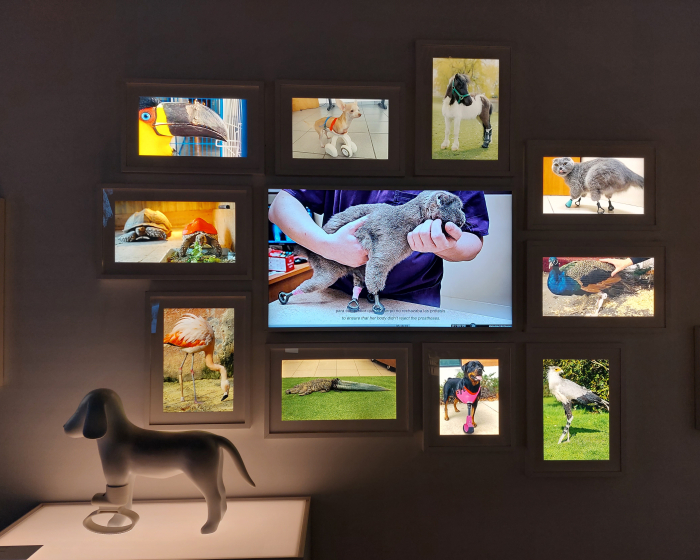
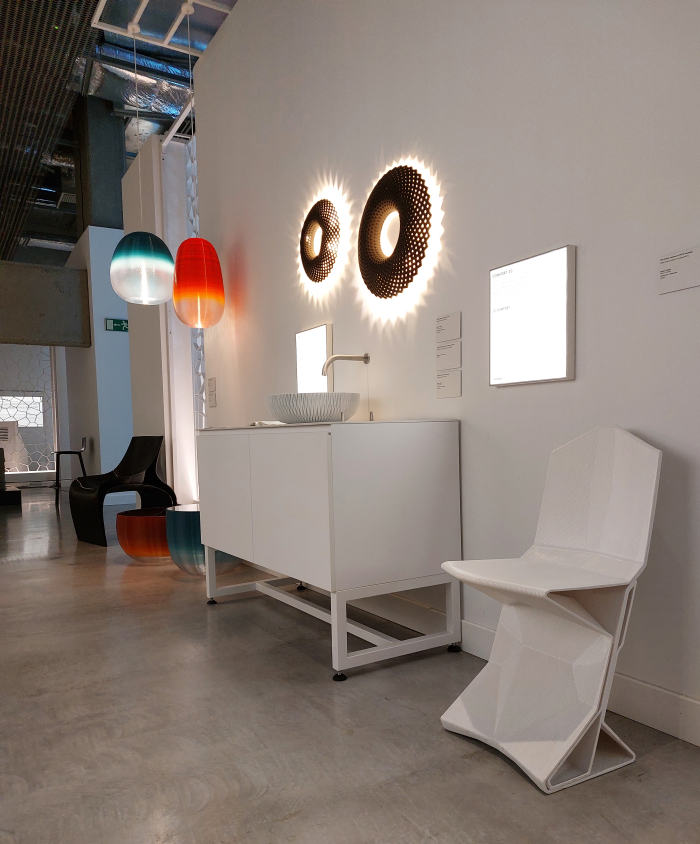
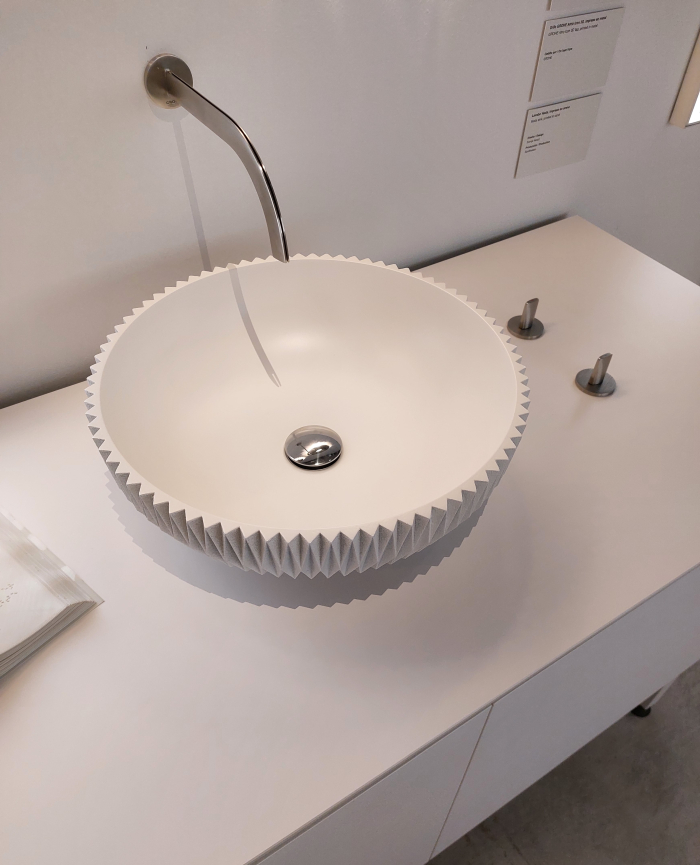
1Murray Leinster, Things Pass By in Thrilling Wonder Stories, Vol. XXVII, No. 2, Summer 1945, page 20 Might not be the first ever vision of 3D printing, indeed we wouldn't be surprised if there were older ones, Leonardo da Vinci probably imagined such, it sounds like the sort of idea he'd have. But it is a very apposite text in context of contemporary 3D printing and the brave new future it promises.
2ibid, page 19-20
3ibid, page 19
4To be fair we aren't actually aware of an actual automatic Pokémon M&M dispenser, its existence is purely as a rhetoric tool born of our imagination. That said, it genuinely wouldn't surprise us if there was one out there somewhere.
5Given that Caixa are a bank we did long reflect in PRINT3D on the question of 3D printing and the future of banking, on how will 3D printing affect banking? But didn't get beyond allowing investment bankers to print their own bonuses, which also seemed improbable in a cashless future. But are there any others, or will 3D printing have but little impact and agency on service industries?